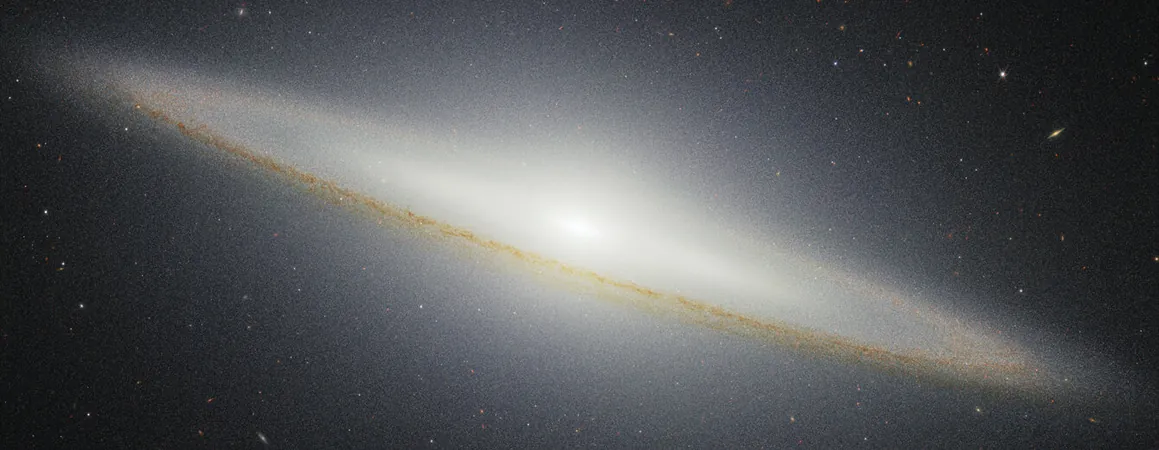
Unveiling the Mysteries of the Sombrero Galaxy: Latest Insights from Webb
2025-06-03
Author: Jia
The Sombrero Galaxy, an astronomical marvel that has captivated stargazers for centuries, is getting clearer insights thanks to the powerhouse of space observation: NASA's James Webb Space Telescope.
A Historical Marvel and a Telescopic Triumph
First documented in 1781 by French astronomer Pierre Méchain, the Sombrero Galaxy, also known as Messier 104, holds a significant place in the history of astronomy. Despite not officially making it into the Messier catalog until 1921, its striking visibility makes it a frequent subject for amateur astronomers. Now, with new observations from Webb, we are piecing together a more complete image of this iconic galaxy.
Webb Reveals the Galaxy's Inner Workings
In a groundbreaking follow-up to earlier mid-infrared images captured in late 2024, the Webb telescope has now delivered stunning near-infrared observations. These new images highlight the Sombrero's massive stellar bulge at its core while revealing how interstellar dust obscures some of the outer light.
By studying the galaxy across various wavelengths—near-infrared with Webb and visible light with Hubble—astronomers are gaining insights into the complex interactions of stars, gas, and dust that shape this galaxy.
Dust and Light: A Tale of Two Views
Interestingly, the near-infrared images show a less pronounced dust disk than Hubble's visible light pictures. This difference is due to infrared light's ability to penetrate dust more effectively, revealing hidden details that were previously obscured.
A Cosmic Collision? The Galaxy's Tumultuous Past
At approximately 30 million light-years away in the Virgo galaxy cluster, the Sombrero Galaxy boasts a mass comparable to 800 billion suns. Its edge-on perspective to Earth provides a unique look at its structure, but studies suggest a turbulent history marked by galactic mergers.
Research indicates that the distinguishing chemical characteristics of its globular clusters—around 2,000 clumps of ancient stars—hint at a past less serene. These clusters exhibit unexpected variations in elemental composition, suggesting they formed from different materials during a violent galactic merger.
A Tilted Perspective on Cosmic Architecture
While we observe the Sombrero from a nearly edge-on perspective, the inner disk’s tilted formation defies a flat profile, resembling a funnel. This unique angle allows Webb to capture intricate details, including individual stars that twinkle outside of the galaxy’s main body.
Among these stars are the vibrant red giants—cooler but luminous due to their extensive surface area—offering a contrast to smaller blue stars that are less visible in longer wavelengths.
A Cosmic Canvas
Webb’s powerful NIRCam also reveals a tapestry of distant galaxies of various shapes and colors, each providing clues about their own cosmic journeys and distances from Earth. The diversity of observed colors paints a rich picture of our universe, deepening our understanding of galactic evolution.
The new findings from the Sombrero Galaxy serve not only to clarify its structure but also to open new avenues of inquiry into the life cycles of galaxies. This cosmic giant continues to inspire both researchers and stargazers alike.





 Brasil (PT)
Brasil (PT)
 Canada (EN)
Canada (EN)
 Chile (ES)
Chile (ES)
 Česko (CS)
Česko (CS)
 대한민국 (KO)
대한민국 (KO)
 España (ES)
España (ES)
 France (FR)
France (FR)
 Hong Kong (EN)
Hong Kong (EN)
 Italia (IT)
Italia (IT)
 日本 (JA)
日本 (JA)
 Magyarország (HU)
Magyarország (HU)
 Norge (NO)
Norge (NO)
 Polska (PL)
Polska (PL)
 Schweiz (DE)
Schweiz (DE)
 Singapore (EN)
Singapore (EN)
 Sverige (SV)
Sverige (SV)
 Suomi (FI)
Suomi (FI)
 Türkiye (TR)
Türkiye (TR)
 الإمارات العربية المتحدة (AR)
الإمارات العربية المتحدة (AR)